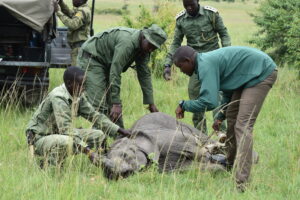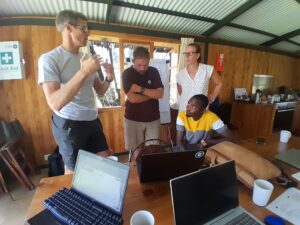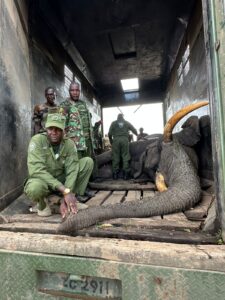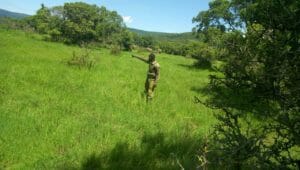
The month of April for Mara Elephant Project saw some great successes and some setbacks. The rain continues in the Mara and though the wildlife and vegetation are very happy, it’s been difficult for everyone living and working here to get around with the Mara River flooding. Left: A MEP ranger in tall green grass while on patrol.
MEP Monthly Report April 2018
In April, MEP intelligence rangers took part in a very notable arrest by Kenya Wildlife Service of two suspects with 25 kg of ivory. The intelligence team’s new vehicle has proven to be a great asset already in gathering intelligence that leads to arrests like this. Unfortunately, as with the trend we’re seeing, these tusks were from Tanzania. This leads us into the most devastating news, our large collared bull elephant Mytene was poached in the Serengeti National Park in Tanzania on April 10. MEP rangers received an immobility alert on his collar and were able to alert Tanzania National Parks Authority (TANAPA). The TANAPA rangers responded immediately, which prevented the poachers from getting away with Mytene’s two 40 kg tusks. Mytene was not a crop raiding elephant, but instead was collared simply because of his large tusks and the importance of being a breeding male elephant in his prime. This is a huge loss for Mara Elephant Project and the Mara ecosystem as a whole and really highlights the point that partnering with TANAPA and Tanzania organizations like the Singita Grumeti Fund are vital for us to connect the Serengeti to the Mara ecosystem and protect all elephants that move throughout.
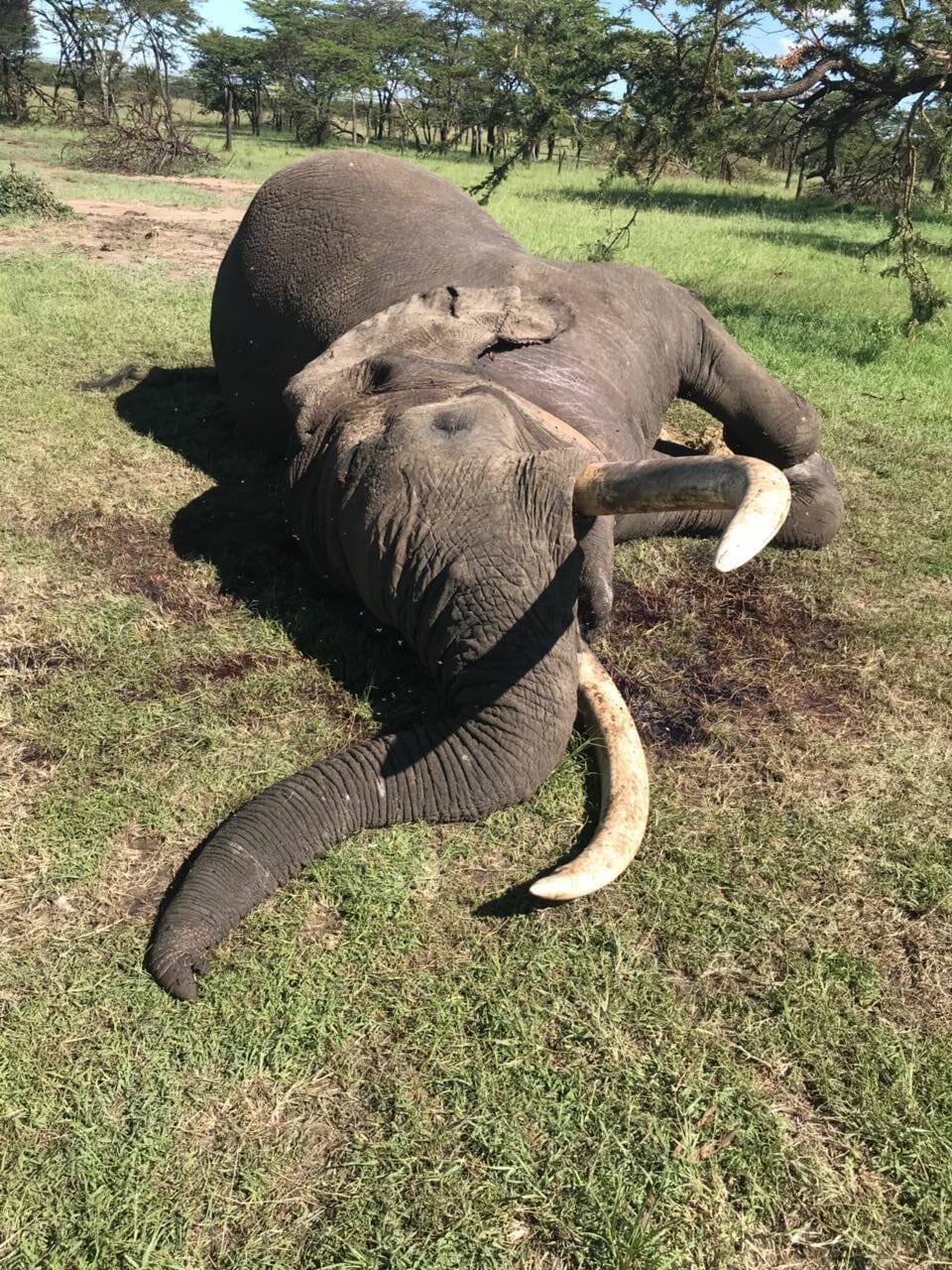
Mytene’s carcass with the tusks still intact.
Another vital part of protecting the Mara’s elephants is good long-term data collection. In the first quarter of 2018, there were 16 total elephant carcasses reported in the Mara ecosystem with 10 of these found in the national reserve. Unfortunately, eight of these carcasses were recorded as an “unknown” cause of death meaning their death was not attributed to poaching, human-elephant conflict or natural causes. This “unknown” cause of death means that there needs to be a more concerted effort across the Mara ecosystem to improve the forensic evaluation of the carcass site. So, on April 17, MEP hosted a Monitoring of Illegally Killed Elephants (MIKE) harmonization meeting in Narok to bring together conservation organizations and national reserve representatives to discuss how to collect better evidence. They discussed improving surveillance of elephant carcasses that would ensure that they are found before they decompose to the point where the vet cannot establish the cause of death, which is a vital data point for organizations like MEP. Also discussed was the need for a quick response to carcasses so that ivory can be recovered by the authorities.
MEP HQ was extremely busy in April with ranger training. The newly established David Sheldrick Wildlife Trust (DSWT) Mau Team rangers were all participating in basic training at headquarters with Narok County Government Warden Patrick Gilai leading the training. The DSWT Mau Team vehicle is ready and waiting for this ranger unit as soon as they are finished with training and in the meantime a MEP rapid response unit has been assigned to the Mau Forest while the DSWT team is in training.
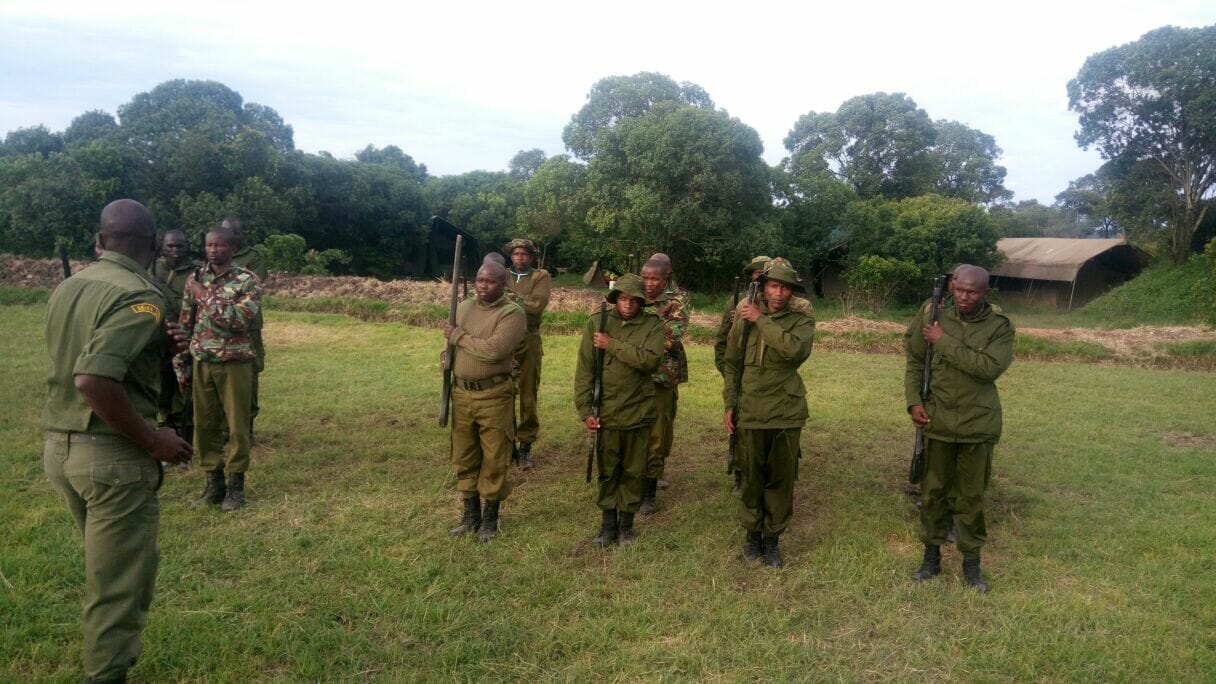
Rangers in training at MEP HQ.
In response to the increased attacks on elephants in the Ngoswani area MEP will partner with the Ollaro Conservancy to put together a joint human-elephant conflict (HEC) team in the area. This will help the Ollaro Conservancy ranger teams who are all well trained and have good institutional knowledge of the area but due to the large amount of conflict and area they simply don’t have the man power. The joint team will be visiting all surrounding agriculture areas and counseling the community on reporting HEC and the importance of not shooting arrows at the elephants but asking for other mitigation tools. Elephant security is an issue in the Ngoswani area after numerous elephants has been seen with arrow wounds.
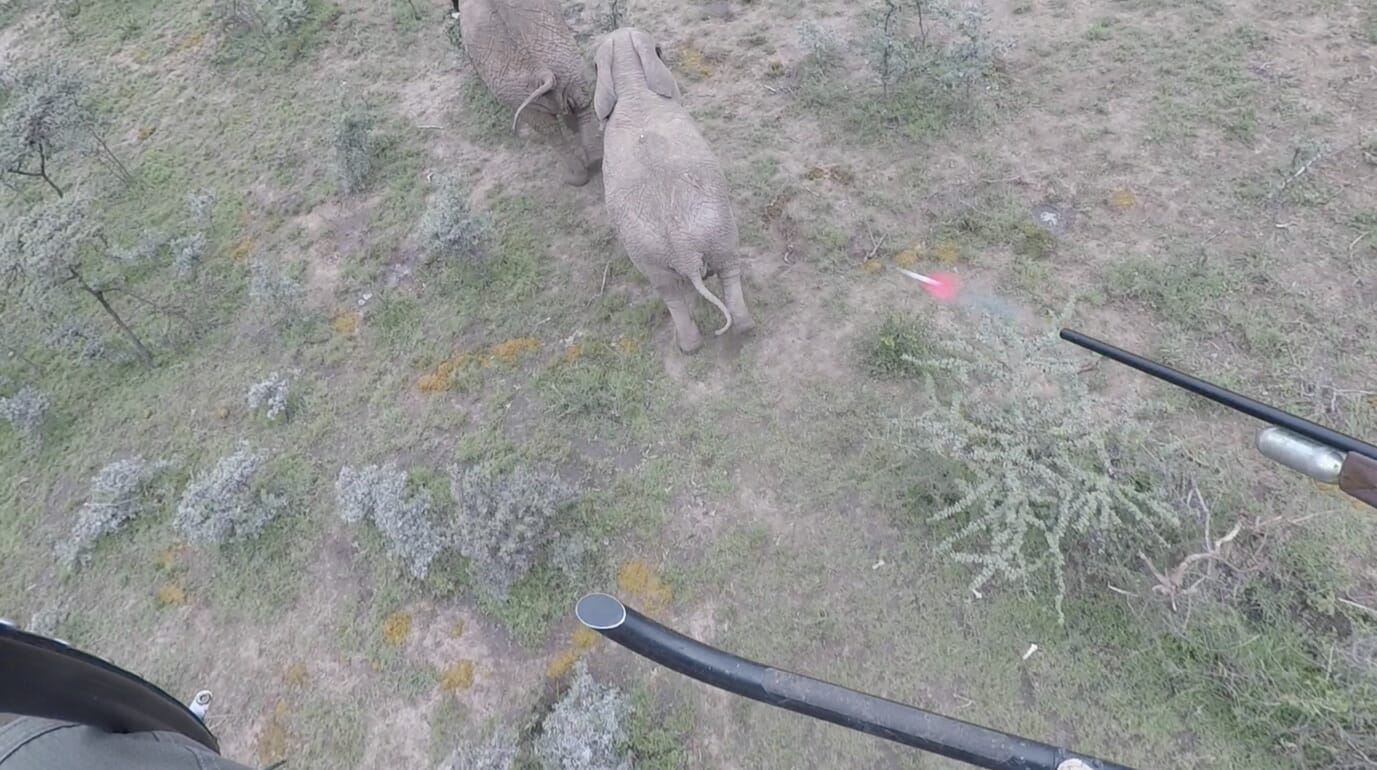
Darting an injured bull in the Ngoswani area in Siana.
Mr. Ryan Wilkie has been attached to MEP from Save The Elephants starting in April through September. He will be working on producing the elephant yearbook of all MEP collared elephants including their movements and some stories about each one. This will be a great marketing tool for MEP to use with visitors and donors as well as something we can hand out to safari guides who will be able to better educate their guests on the elephant collars. Ryan will also be working on sections of MEP’s technical report which we plan to publish by the end of this year. Additionally, Dr. Jake Wall spent two weeks at MEP and went through in detail the data catalogue with Tracking Manager Wilson Sairowua and set a number of tasks for the team to complete while he is away. Already we have new map outputs to show our areas of operation, MIKE and we will be producing HEC and arrest maps in the beginning of May. All of these maps and all of this data are vital tools for our organization when meeting government authorities, other conservation organizations, donors and visitors.
In terms of fundraising, Crooked Creek Elementary School in Indianapolis, IN raised $2,000 for MEP through their Global Marketplace in February and presented the check in April. We also received $215 from Facebook donations and fundraisers. MEP is always so delighted when someone chooses our organization as the recipient of their birthday fundraisers on Facebook.
Crooked Creek teachers and students presenting MEP with a check.
The MEP visitor experience is already taking bookings for June – October. A $100 donation ensures you can visit MEP HQ for a tour and learn more about elephants. We’re also offering an elephant collaring experience and the opportunity to visit collared elephants. We now have 14 camps and travel companies all promoting the MEP experience. If you’re interested in more information, please email claire@maraelephantproject.org. We sent out our first quarter newsletter to supporters on April 16 so please take a look at that.

